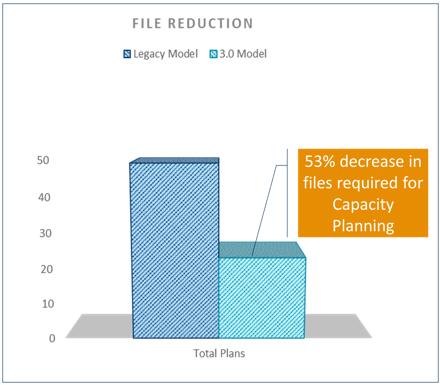Reading time: 4 Minutes
Case Studies / Contact Center Management
WFM Capacity Planning Model Helps Leading Healthcare Insurance Company Reduce Claims Capacity Planning Footprint, Increase Analyst Efficiency, and Save on Headcount Expenses
Healthcare Industry
Challenge
- A leading health insurance company needed a new back-office claims capacity planning model that was flexible and efficient. The existing model no longer aligned with the way the business was managed and was inefficient to operate. Plan volumes for their different business lines were separated into distinct silos that didn’t account for the crossover between the individual plans.
- The main claims group had 49 individual plans that they planned to migrate to the new model, a labor-intensive process.
- An additional challenge was that the business footprint would have to be expanded to include another group with 11 additional plans which could require additional headcount.
Approach
- Northridge partnered with this client to build a new Claims capacity planning model that consolidated plan volumes so that gaps and opportunities could be easily identified and remedied.
- The new blended model reduced their file footprint for Claims (the number of plans they manage) from 49 to 23, a 53% reduction.
- All data was still represented, but the new blended format allowed sharing across businesses, resulting in a ~50% increase in analyst efficiency. Since the volumes were no longer siloed, it was easier to identify and resolve gaps and opportunities, leading to further efficiencies.
- The reduction in files and combining of resources among business lines allowed the client to add the 11 plans from the additional group without adding any headcount, a savings of approximately 2-3 FTE.
Business Impact
- Benefits of the new back-office claims capacity model included:
- Reduced file footprint for Claims by 53%
- Reduced monthly production time for analysts by 30-50%
- Installed additional group’s plans without additional headcount
- Exposed and corrected previously unknown errors in file configuration on 3 separate plans
- Aligned functions allow for more effective coverage
- Quantified previously estimated gaps for new group
- Avoided the cost of implementing the new group into the previous model (at least 28-30 files and additional ~2 to 3 FTE)
Case Studies / Contact Center Management
WFM Capacity Planning Model Helps Leading Healthcare Insurance Company Reduce Claims Capacity Planning Footprint, Increase Analyst Efficiency, and Save on Headcount Expenses
Healthcare Industry
Challenge
- A leading health insurance company needed a new back-office claims capacity planning model that was flexible and efficient. The existing model no longer aligned with the way the business was managed and was inefficient to operate. Plan volumes for their different business lines were separated into distinct silos that didn’t account for the crossover between the individual plans.
- The main claims group had 49 individual plans that they planned to migrate to the new model, a labor-intensive process.
- An additional challenge was that the business footprint would have to be expanded to include another group with 11 additional plans which could require additional headcount.
Approach
- Northridge partnered with this client to build a new Claims capacity planning model that consolidated plan volumes so that gaps and opportunities could be easily identified and remedied.
- The new blended model reduced their file footprint for Claims (the number of plans they manage) from 49 to 23, a 53% reduction.
- All data was still represented, but the new blended format allowed sharing across businesses, resulting in a ~50% increase in analyst efficiency. Since the volumes were no longer siloed, it was easier to identify and resolve gaps and opportunities, leading to further efficiencies.
- The reduction in files and combining of resources among business lines allowed the client to add the 11 plans from the additional group without adding any headcount, a savings of approximately 2-3 FTE.
Business Impact
- Benefits of the new back-office claims capacity model included:
- Reduced file footprint for Claims by 53%
- Reduced monthly production time for analysts by 30-50%
- Installed additional group’s plans without additional headcount
- Exposed and corrected previously unknown errors in file configuration on 3 separate plans
- Aligned functions allow for more effective coverage
- Quantified previously estimated gaps for new group
- Avoided the cost of implementing the new group into the previous model (at least 28-30 files and additional ~2 to 3 FTE)
Let’s Talk About Your Organization
With experience across nearly every industry, non-profit and governmental agency, we have the team to help you grow.





